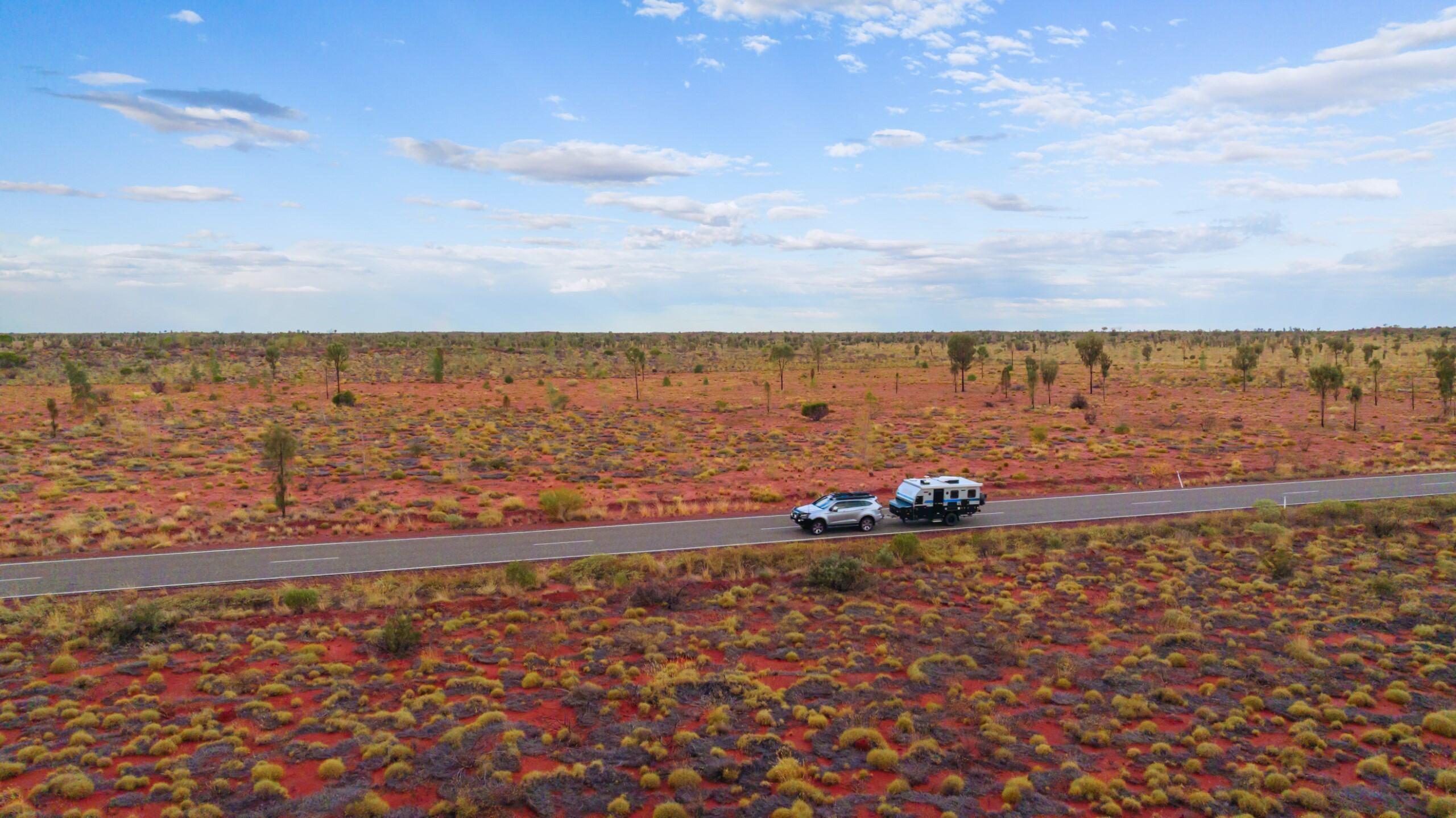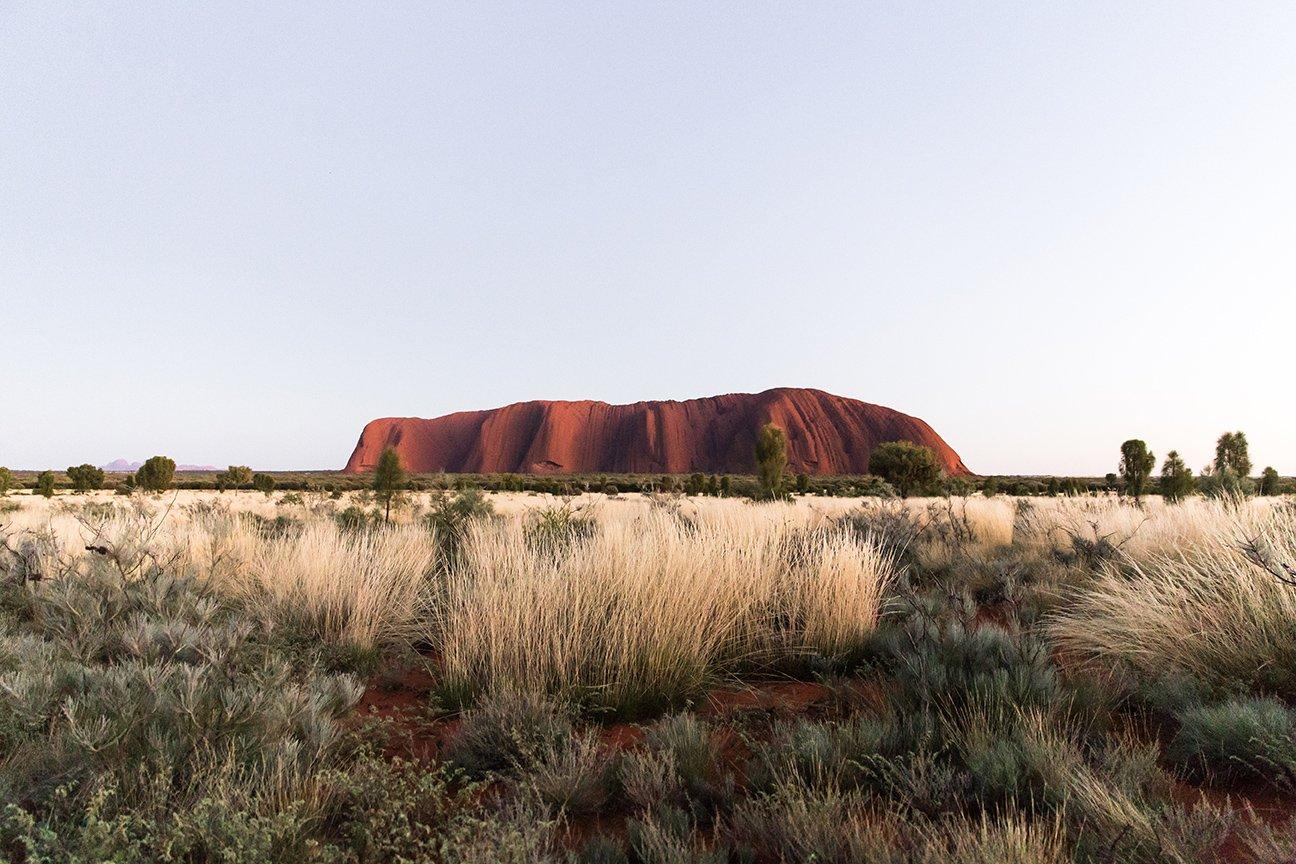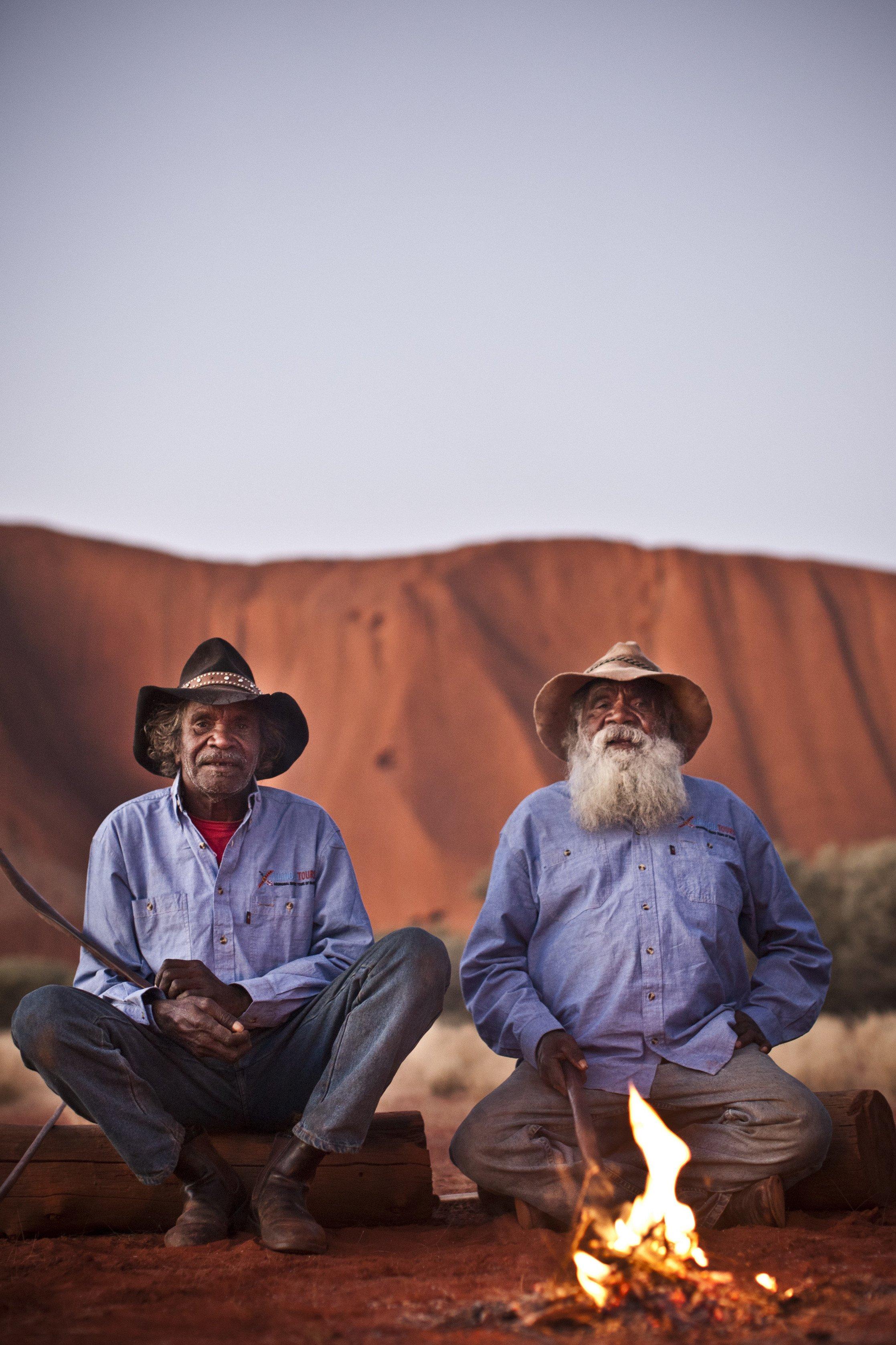A photographer's Guide to Uluru and Kata Tjuta
There are few experiences in Australia as awe-inspiring as a visit to Uluru. Imposing and timeless in the vastness of the outback, Uluru is endlessly photogenic with its stark beauty and changing hues. The draw of photographing in Australia's spiritual heart is compelling and irresistible.

There are few experiences in Australia as awe-inspiring as a visit to Uluru. Imposing and timeless in the vastness of the outback, Uluru is endlessly photogenic with its stark beauty and changing hues. The draw of photographing in Australia's spiritual heart is compelling and irresistible.
For those planning a visit to Uluru, and nearby Kata Tjuta, here are some of my photography ideas and tips on how to best approach it.
Need to Know
PARK ENTRY AND PERMITS
When visiting Uluru-Kata Tjuta National Park, a park pass is required - available at the entry gate and valid for 3 consecutive days. It’s important to note that the park has seasonal opening and closing times and that there are numerous culturally sensitive areas within the park where photography is prohibited. There are also designated viewing areas, meaning you can’t just pull over anywhere or walk off track for that perfect shot.
In addition, if you want to use any of the imagery or video you capture commercially (eg. prints, stock or for promotion of your business via social media), you’ll need to apply for a permit from the Uluru Media office before you arrive. While this may all seem very restrictive, these measures are in place to protect the fragile natural environment and to respect the cultural values of the local Anangu people – the traditional owners of the land.
Getting Around
Travelling in to and around the park is easy. There are numerous tours on offer as well as a shuttle bus to and from the Park from nearby Ayers Rock Resort. However, to provide the most flexibility in terms of locations and timings, I’d highly recommend having your own vehicle or hiring a car.
When to Go
The perfect time to visit Uluru-Kata Tjuta National Park is in the cooler months between May and September when walking is easiest and the desert colours are most vibrant. In summer the temperatures can go up to around 40 degrees Celsius during the day, but night times are beautiful and balmy. The summer also coincides with the wet season and can offer the rare chance to see rainfall cascading down the face of Uluru.
What Gear?
A digital camera with manual exposure capabilities is ideal, as is a good zoom or mix of lenses to capture both wide scenes and far off detail. A tripod is a handy addition for photographing during twilight periods, capturing the night sky and for daytime selfies. Other useful photographic accessories are a polarizing filter to help saturate colours and a lens blower to keep your equipment clean from the outback dust.
The winter months (May – July) are best for outback astrophotography, while August and September are notable for the chance to photograph colourful wildflowers blooming in the desert landscape.During these months it does get very cold during the night and at sunrise and sunset, so make sure to pack warm clothes.


Best Time of Day
Uluru and Kata Tjuta are truly stunning at all times of day, with the shifting light creating a sea of texture and shadows on their undulating rock faces. Capturing the sights from different perspectives and times of day will reward you with a good mix of moods and tones in your shots. For example, Uluru when front lit appears a rich ochre, but shooting into the sun, it takes on a reddish-brown hue.
Sunrise and sunset are undoubtedly the best times for that postcard shot and to capture those famed changing colours of the rock. At sunset, Uluru can transform from shades of luminescent orange, to maroon and then deep reds with minutes. Aim to arrive at your viewing point around 2 hours before sundown to ensure a parking spot and a clear view of nature’s light show. Arriving a little earlier will also provide a foreground free of people’s shadows as the sun dips behind you. Linger after the sun has set to capture the landscape in the soft moonlight or under the first twinkling stars.
A sunrise view is equally alluring - as the sun’s rays streak across the desert landscape of spinifex grass and desert oaks, before bathing the rock in a gorgeous morning glow. As an alternative to catching the dawn views from the Sunrise Viewing platform, head to the Sunset Viewing spot where you can photograph Uluru or Kata Tjuta in silhouette against the changing sky, with little or no crowds.


Best Locations and Compositions
ULURU
The Sunset Viewing area for cars is the go-to spot to take in sweeping views of the desert plains and a sun-lit Uluru. It’s a deservedly popular location and gets busy; so arrive early to scope out a prime view. The far (southern) end of the car park is a good tip for an unobstructed view, but also be prepared to move around to find foreground interest for your shots – such as gnarled trees, red earth or spindly grasses. If you’re lucky, some mottled clouds or a rising full moon will also provide a striking backdrop to your scene.
Shoot wide to show Uluru in the flat desert expanse, but also think about zooming in for close-up detail of the rock’s ridges and water-stained grooves. By including other people in the foreground of your shots, you’ll also give viewers a sense of what it’s like to experience an Uluru sunset.
For sunrise, the Talinguru Nyakunytjaku viewing area provides a stunning vista towards the south-east face of Uluru. Here there are looped walking tracks where you can frame the rock between pencil-thin desert oaks. However, for a 360-degree view of the beautiful outback scrub and to capture Uluru and Kata Tjuta in the same shot, head to the dune-top viewing platform. It can get crowded here for sunrise - so again, get here ahead of time for the best views. You’ll find however that just after sunrise, the crowds disperse and you’re likely to have it all to yourself.
Talinguru Nyakunytjaku also works well as an uncrowded sunset spot, with the landscape in golden silhouette before the sun drops behind the rock or dissolves into the horizon.
For more intimate shots, early morning or late afternoon are great times to do the Uluru Base Walk. Here you can get up close to the rock, revealing it’s rugged, rust-like texture. The lush foliage at the base, especially around Kantju Gorge and Mutitjulu Waterhole, provide a dramatic contrast against the red sandstone. Frame your shots to include other walkers to emphasise scale and use pathways or natural features to lead the viewers’ eye into the scene.
KATA TJUTA
Meaning ‘many heads’ in the local Anangu language, the ancient rock formations of Kata Tjuta rise majestically above the green-tinged bushland. From the Dune Viewing area, off the main road to Kata Tjuta, you can take in a wide panorama of the domes (there are 36 in total). Sunrise is particularly scenic here with mulga trees dotting the golden spinifex plains with Uluru silhouetted to the east.
Closer to the domes, the Sunset Viewing spot offers those iconic views of Kata Tjuta’s main domes. Give yourself time to explore the pathways to find a perspective unobstructed by the tallest of the shrubs. Like Uluru, the transformation of light and colour happens quickly here either side of sunset, so work quickly to capture a few different compositions. Stay to watch the twilight colours evolve but keep in mind the park’s closing time and the half hour drive back to the park’s entrance. This location is also a great option for a sunrise silhouette of the rock formations.
At Walpa Gorge, a trail leads you along a natural creek bed between Kata Tjuta’s two tallest domes. The sheer, rugged walls here provide a captivating backdrop to the foliage flourishing along their base. If there’s water in the creek when you visit, get down low to capture reflections of the gorge in the natural pools.
A Bird's Eye View
For a whole different perspective on Uluru and the outback landscape, take to the skies with a scenic helicopter or plane flight. If your budget allows, choose the option that includes both Uluru and Kata Tjuta and try for either a sunrise or sunset flight. The scene of first light hitting Uluru, combined with the textures and shadows created in the desert landscape is truly magical. If you’re doing the helicopter option and don’t mind the rush of cold air (especially on freezing winter mornings), also ask about the possibility of a doors-off flight for the clearest views.
An issue you may have when shooting from the air is ensuring you have a fast enough shutter speed to achieve sharp images. Generally you’ll want an exposure of 1/800 sec or quicker. Shooting at sunrise and sunset will also mean you have to increase the ISO to around 1600 to 3200 and shoot with a large aperture (say f4 or f5.6) to achieve these fast shutter speeds. In brighter conditions you can take your ISO down to 800 or 400.
Outback Night Sky
If you’ve ever wanted to get that iconic shot of the Milky Way over Uluru, then mid-winter offers the ideal opportunity. During this time, the stars come out shortly after nightfall and importantly, before the park’s closing time – normally 7.30pm at this time of year.
Try to time your visit so that it coincides with a rising moon that’s 10 – 40% full. This added moonlight assists in illuminating the landscape, whilst not overpowering the stars in the night sky. Set up at the Sunset Viewing spot with a tripod and your widest lens. Work with ISO settings around 3200, an aperture of f2.8 and an exposure between 5 to 10 secs. If there’s no moon, then bump your ISO a little higher and go for a longer exposure.
If you visit any other time outside of summer, you can also capture the Milky Way from outside the National Park – normally, from the dune top lookout near Ayers Rock Resort.
A Unique View
Finally, if you’re wanting to create your own, unique take on Uluru and Kata Tjuta – something beyond the classic view – here’s are a couple of tips for getting creative:
- Always look to add depth and contrast to your images using some foreground interest: flowering plants, tall grasses, weathered rocks, etc.
- Photograph the experience as much as the landscape, by including other travellers in your shots for scale and for that human element.
- Make the most of your lenses and/or zoom: shoot wide for an expansive view and zoom in tight to bring out detail and texture.
- Go against the 'done-thing' and shoot sunrise from the sunset spot and vice versa to capture the sights backlit.
- Change your height: get low to the ground to emphasise the red earth or grasses; or alternatively, go aerial for an overhead view.
- Vary your composition for the horizon: allow plenty of sky to show vastness or have minimal sky to emphasise the desert environment.
- Find unusual perspectives: perhaps take a ride on a camel train with Uluru beyond; or frame the domes of Kata Tjuta through a car window.
- Always shoot at varying times of day and from different viewpoints to take in the changing moods and tones of Uluru and Kata Tjuta.
About Andrew Watson
Andrew is a commercial and travel photographer based in Cairns, North Queensland. Andrew has a passion for showcasing the natural beauty of his home region, as well as the iconic and remote locations of Australia. His imagery is a colourful, diverse mix of landscapes, underwater scenes, native wildlife and aerial perspectives.
You can follow Andrew on Instagram: @andrewwatsonphoto or via his website: www.andrewwatson.com.au
















